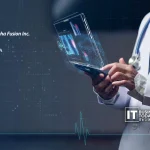富士通株式会社と名古屋大学(THERS)は、新しいシミュレーション技術を開発しました。この技術は、新しい交通サービスの利用を促進し、モビリティギャップに取り組むことを目的としています。SAMSIM(Social Acceptance Model-Based Simulation)と名付けられたこの新システムは、ライドシェアや自動運転車のようなサービスに対する人々の受け入れ態勢に精神的要因がどのように影響するかを調べます。SAMSIMは、AI主導のデジタルリハーサル技術と併用することで、戦略を早期にテストするのに役立ちます。これにより、スムーズなサービス導入が可能になります。
高齢化が進み、ドライバーの数が減っていることが問題になっています。そのため、ライドシェアや自動運転車といったソリューションが注目を集めています。これらのサービスが一般に受け入れられるかどうかは、人々がどのように感じるかにかかっています。重要な要素には、安全性、信頼性、知覚価値などがあります。幅広い利用を促すには、心理的要因を理解する必要があります。そうすれば、行動を効果的に変化させるイニシアチブを生み出すことができます。
SAMSIMのシミュレーションでは、スマートな啓発キャンペーンを実施することで、サービス利用意向を20%程度高めることができることが示されました。本開発は、富士通・名古屋大学ソーシャルデジタルツイン研究部門の重要な成果です。本拠地は富士通小研究室。2025年8月1日より、富士通リサーチポータルで公開デモをご覧いただけます。
こちらもお読みください: TradeWaltz社とCyberport社が協業を開始
名古屋大学は社会受容モデルを作成しました。このモデルは、人々がさまざまな交通手段を選択する心理的な理由に着目したものです。このモデルは富士通のエージェントベースシミュレーションプラットフォームと連動しています。デジタル・ツイン技術を使って、人々が実生活でどのように行動するかを模倣し、予測します。この統合により、研究者は介入策がどの程度有効かをテストすることができます。これには、ターゲットを絞った広告や、より多くのサービスの提供などが含まれます。
富士通は、2023年に実施した実証実験のデータを用いて、システムの有効性を検証。この実証実験は、奈良県川西町のオンデマンド型ライドシェアタクシーサービスが対象。中央復建コンサルタンツ株式会社と共同で実施。名古屋大学は、約1,200人の住民を対象に48項目のアンケート調査を実施。このグループは町の人口の約15%に相当。調査の目的は、人々のサービス利用意欲に影響を与える心理的要因を把握すること。
SAMSIMモデルは、住民がオンデマンド交通サービスをどのように利用するかにマッチしました。90%という高い精度を達成しました。
富士通株式会社 そして 名古屋大学 は、これらの洞察に基づき、主に2つの戦略を改善しました。一般市民の認知度を高めることと、車両の利用可能性を高めることです。これらの変更は、2つの重要な心理的要因、すなわちサービス認知と知覚された有用性に基づいています。シミュレーションの結果、より良いタイミングとより頻繁な資料の宣伝、さらにタクシーの増車によって、予約の失敗を減らし、利用意向を約20%向上させることができることがわかりました。これらの変化は、オンデマンド交通サービスを長期的に持続可能なものにするために大いに役立つはずです。







